When it comes to making the perfect cup of espresso, choosing the right machine is crucial. Espresso machines come in various types, but today, we’ll focus on the two main categories: automatic and semi-automatic. Each type has its own set of features, benefits, and potential drawbacks, making it essential to understand the differences before making a purchase.
Automatic Espresso Machines
Automatic espresso machines are designed for convenience and consistency. These machines take over most of the brewing process, ensuring a reliable shot of espresso every time. Key features include programmable settings, built-in grinders, and automatic milk frothers. They’re perfect for those who want a hassle-free experience with minimal manual intervention.

Semi-Automatic Espresso Machines
Semi-automatic espresso machines, on the other hand, offer more control over the brewing process. These machines require the user to manually grind the coffee, tamp it, and start the extraction process. This hands-on approach allows for greater customization and can lead to a more personalized espresso experience.
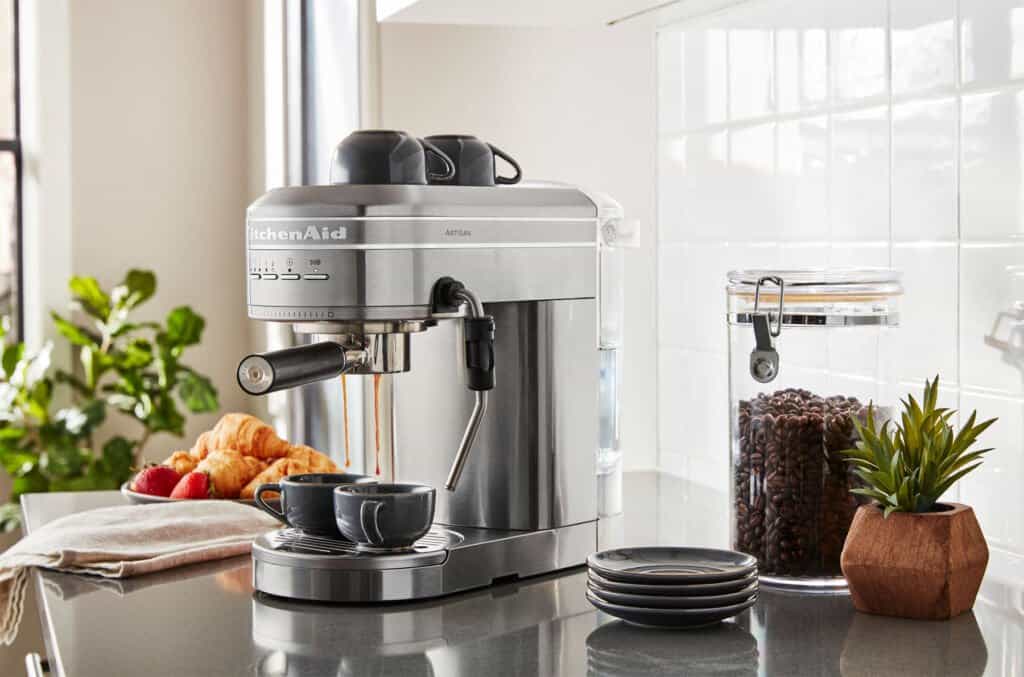
While they may require more skill and effort, many enthusiasts prefer semi-automatic machines for the art of espresso making.
In this article, we’ll dive deeper into the pros and cons of each type of automatic vs semi automatic espresso machine, helping you decide which one suits your needs and preferences best. Buckle up, coffee lovers, and let’s get brewing!
Understanding Espresso Machines
Espresso machines are a staple in any coffee lover’s kitchen, designed to brew rich, concentrated coffee by forcing hot water through finely-ground coffee beans. These machines come in various types, but the core process remains the same. Water is heated to the ideal brewing temperature, then pressurized and pushed through the coffee grounds, extracting the bold flavors and aromatic oils to create a perfect shot of espresso.
The beauty of espresso machines lies in their ability to deliver consistent results, whether you prefer a quick morning pick-me-up or a more elaborate coffee creation. They offer a range of features, from built-in grinders to steam wands for frothing milk, catering to both beginners and seasoned baristas. Understanding how espresso machines work is the first step toward mastering the art of espresso making and enjoying café-quality coffee at home.

Types of Espresso Machines
When it comes to espresso machines, two popular choices stand out: automatic and semi-automatic. Both offer unique features and benefits, catering to different levels of coffee-making expertise and preferences. Let’s dive into the details of each type.
- Automatic espresso machines are designed for those who value convenience and consistency. With an automatic machine, you simply press a button, and the machine takes care of the rest. These machines automate the brewing process, ensuring that the right amount of water is pushed through the coffee grounds for a perfect shot of espresso every time.
- Semi-automatic espresso machines offer a blend of manual control and automated convenience. These machines allow you to start and stop the water flow manually, giving you more control over the extraction process. This added control can lead to a more personalized and precise espresso experience.
Understanding the differences between automatic and semi-automatic espresso machines can help you decide which one is right for you. Whether you prioritize ease of use or the ability to customize your brew, there’s a machine out there to meet your needs.
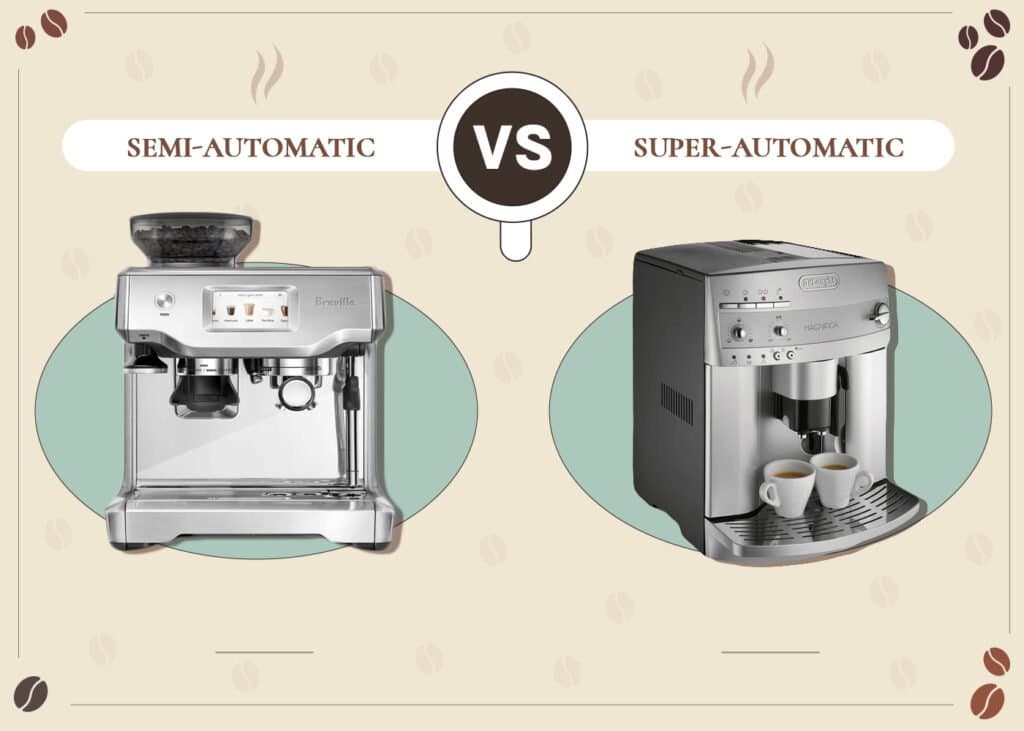
Automatic Espresso Machines
Automatic espresso machines simplify the espresso-making process, making them a popular choice for those who value convenience and consistency.
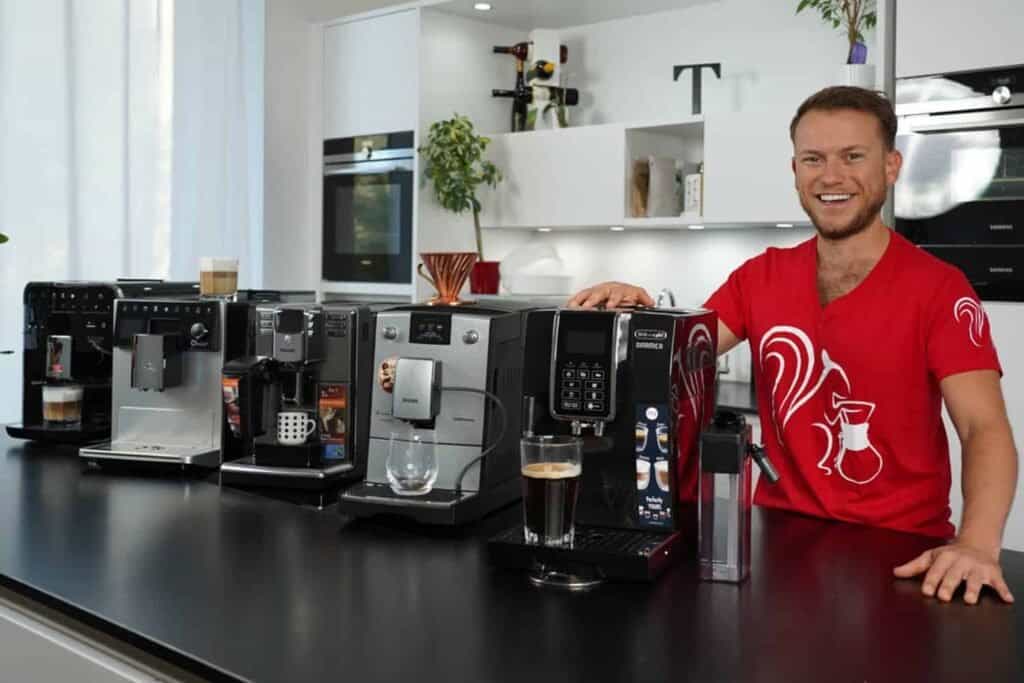
How Automatic Espresso Machines Work
Automatic espresso machines are designed to streamline the brewing process. Here’s a step-by-step look at how they operate:
- Preparation: Some models come with built-in grinders that automatically grind the coffee beans to the perfect consistency. You can also use pre-ground coffee if your machine doesn’t have a grinder.
- Brewing: Once the coffee grounds are in place, simply press a button to start the brewing process. The machine will automatically manage the water temperature and pressure, ensuring a consistent extraction.
- Dispensing: The machine dispenses the espresso directly into your cup. Most models allow you to customize the volume of espresso for each shot.
- Cleaning: Many automatic machines have self-cleaning features that rinse the internal components after each use, making maintenance a breeze.
Benefits of Automatic Espresso Machines
Automatic espresso machines offer several advantages:
- Ease of Use: With one-touch operation, making espresso is quick and straightforward.
- Consistency: Pre-programmed settings ensure you get a consistent shot every time.
- Speed: Ideal for busy mornings, as you can have a cup of espresso ready in minutes.
- Built-In Features: Many models come with additional features like milk frothers, grinders, and programmable settings for various coffee drinks.
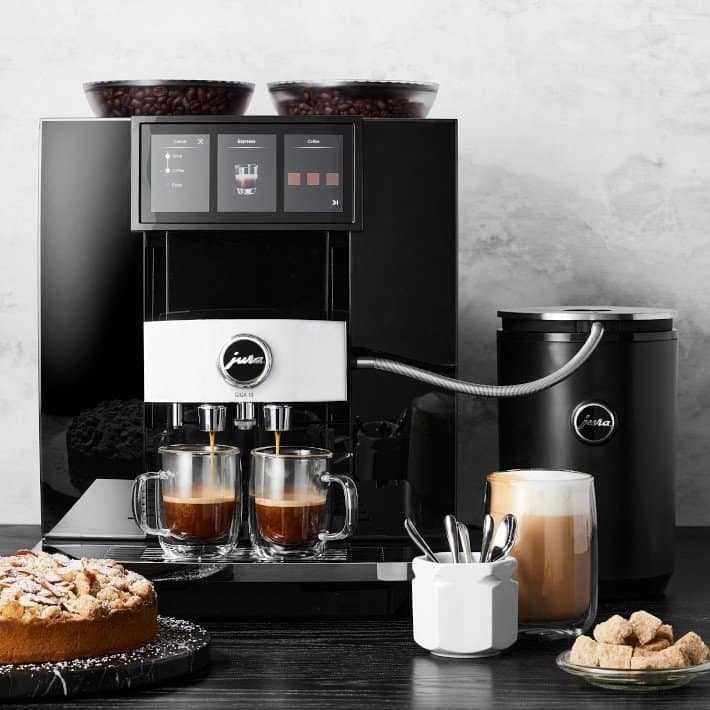
Ideal User Profiles
Automatic espresso machines are perfect for:
- Busy Professionals: If you have a hectic schedule and need a quick caffeine fix without much fuss, an automatic machine is your best bet.
- Beginner Baristas: Those new to making espresso will appreciate the simplicity and reliability of automatic machines.
- Consistency Seekers: If you want the same quality espresso every time without manual adjustments, an automatic machine provides that consistency.
- Multi-Taskers: If you like to prepare other parts of your breakfast while your coffee brews itself, an automatic machine frees up your hands and attention.
Automatic espresso machines are designed to make your life easier while delivering a high-quality espresso experience. They take the guesswork out of brewing, allowing you to enjoy your coffee without the hassle.
Semi-Automatic Espresso Machines
Semi-automatic espresso machines offer a perfect blend of control and convenience, making them a favorite among coffee enthusiasts who enjoy a hands-on approach to brewing.
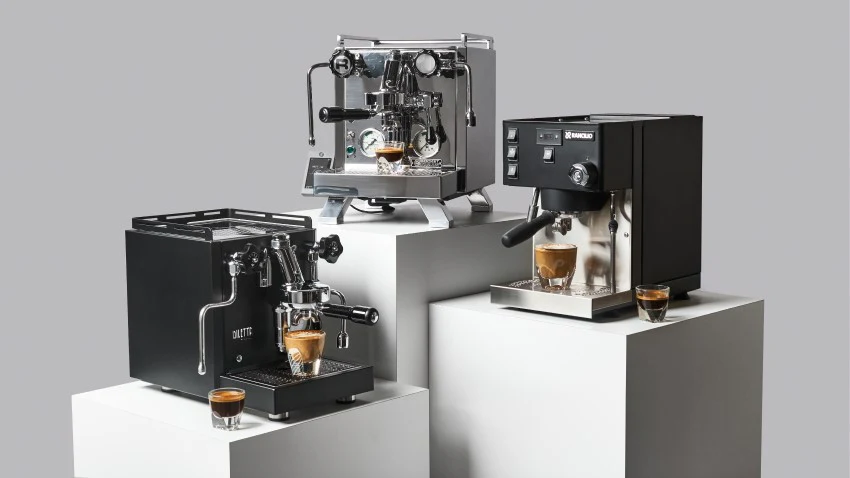
How Semi-Automatic Espresso Machines Work
Semi-automatic espresso machines provide more user control compared to their automatic counterparts. Here’s how they operate:
- Preparation: Start by grinding your coffee beans to the desired consistency. You’ll need a separate grinder if your machine doesn’t have a built-in one. Then, tamp the coffee grounds into the portafilter.
- Brewing: Attach the portafilter to the machine and start the brewing process by pressing a button or flipping a switch. You control the duration of water flow through the coffee grounds, which allows you to fine-tune the extraction.
- Manual Stop: Once the desired amount of espresso is extracted, you manually stop the water flow. This control over the extraction time can significantly impact the flavor profile of your espresso.
- Steaming Milk: If your machine has a steam wand, you can manually froth milk for lattes and cappuccinos, adding another layer of customization to your coffee experience.
Benefits of Semi-Automatic Espresso Machines
Semi-automatic espresso machines come with several advantages:
- Control: You have the ability to control the extraction time and water flow, allowing for a more personalized espresso.
- Customization: Experiment with different grind sizes, tamping pressures, and extraction times to perfect your brew.
- Skill Development: Using a semi-automatic machine helps you develop barista skills, giving appreciation for the art of espresso making.
- Versatility: These machines often come with steam wands, enabling you to create a variety of coffee drinks beyond just espresso.

Ideal User Profiles
Semi-automatic espresso machines are ideal for:
- Coffee Enthusiasts: If you love experimenting and tweaking your coffee to achieve the perfect shot, a semi-automatic machine is for you.
- Home Baristas: Those who enjoy the process of making coffee and want to hone their skills will find semi-automatic machines rewarding.
- Flavor Seekers: If you want to explore the nuances of different coffee beans and brewing techniques, the control offered by semi-automatic machines will help you achieve that.
- Creative Cooks: Those who like to craft various coffee-based beverages, such as lattes, cappuccinos, and macchiatos, will appreciate the versatility of a semi-automatic machine.
Semi-automatic espresso machines provide a satisfying blend of control and automation, making them an excellent choice for those who enjoy the process of crafting their perfect cup of espresso.
Key Features to Consider
Choosing the right espresso machine involves looking at several key features that can significantly impact your coffee-making experience. Here are some of the most important aspects to consider:
Grinder Integration
The Importance of Built-In Grinders
A built-in grinder can be a game-changer for your espresso machine. Freshly ground coffee is essential for a rich and flavorful espresso. A built-in grinder ensures that the beans are ground to the perfect consistency just before brewing, preserving the essential oils and flavors that make a great espresso.
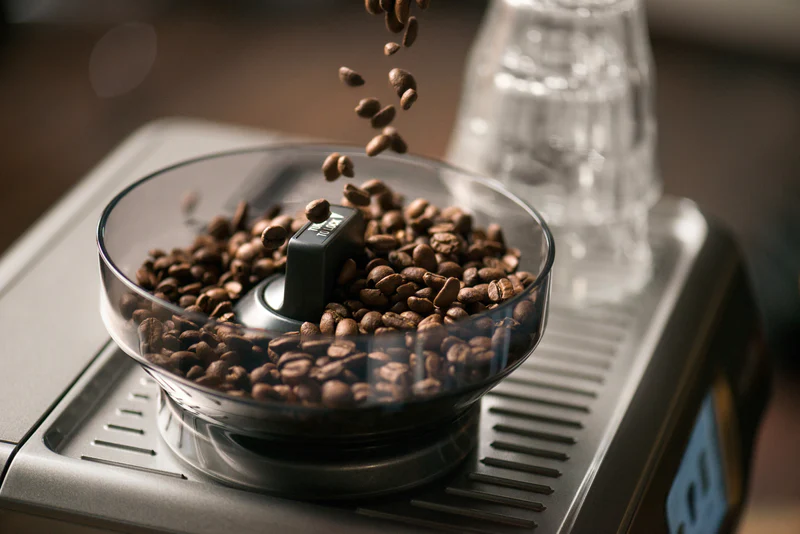
Benefits:
- Convenience: Eliminates the need for a separate grinder, saving space and time.
- Consistency: Provides uniform grind size, crucial for consistent extraction.
- Freshness: Ensures coffee is always freshly ground, enhancing the aroma and taste.
Pressure and Temperature Controls
How Pressure and Temperature Affect Espresso Quality
The pressure and temperature during the brewing process are critical factors that influence the quality of your espresso.

Pressure: Espresso machines typically use 9 bars of pressure to extract the coffee. This high pressure forces the water through the coffee grounds, extracting the rich flavors and creating the signature crema on top of the espresso. Machines with adjustable pressure settings allow you to fine-tune the extraction process, achieving the desired balance of flavors.
Temperature: The optimal brewing temperature for espresso is between 195°F and 205°F (90°C to 96°C). Consistent temperature control is essential for extracting the perfect shot. Machines with precise temperature controls ensure that the water stays within this range, preventing under or over-extraction.
Benefits:
- Flavor Optimization: Proper pressure and temperature settings bring out the best flavors in the coffee.
- Consistency: Consistent pressure and temperature lead to uniform quality in every shot.
- Customization: Adjustable settings allow you to tailor the brewing process to your taste preferences.
When choosing an espresso machine, considering these key features—grinder integration, and pressure and temperature controls—can greatly enhance your coffee-making experience and ensure you consistently produce high-quality espresso.
Pros and Cons
Understanding the advantages and disadvantages of both automatic and semi-automatic espresso machines can help you make an informed decision based on your needs and preferences.
Automatic Machines
Pros:
- Convenience: Automatic machines handle the entire brewing process, making them ideal for quick, hassle-free coffee.
- Consistency: They deliver a uniform shot every time, thanks to programmable settings.
- Features: Often come with built-in grinders and automatic milk frothers for added convenience.
Cons:
- Less Control: Limited ability to adjust the brewing process to personal preferences.
- Cost: Typically more expensive due to advanced features.
- Maintenance: More complex systems can require more maintenance and potential repairs.
Semi-Automatic Machines
Pros:
- Control: Offers greater control over the brewing process, allowing for personalized espresso.
- Customization: Ability to adjust grind size, tamp pressure, and extraction time.
- Skill Development: Ideal for those who enjoy the art of making espresso and want to refine their barista skills.
Cons:
- Learning Curve: Requires more skill and knowledge to operate effectively.
- Time-Consuming: The manual process can be time-consuming, especially for beginners.
- Consistency: Can lead to inconsistent results if not used properly.
By weighing these pros and cons, you can better determine which type of espresso machine—automatic or semi-automatic—fits your lifestyle and coffee-making goals.
Maintenance and Care
Proper maintenance and care are essential for keeping your espresso machine in top condition and ensuring it consistently produces great coffee. Here are some tips to help you maintain and care for your espresso machine:
Daily Maintenance
- Clean the Portafilter and Group Head: After each use, remove the portafilter and clean it thoroughly. Run water through the group head to clear any coffee residue.
- Empty the Drip Tray and Knock Box: Regularly empty and clean the drip tray and knock box to prevent buildup and odors.
- Wipe Down the Machine: Use a damp cloth to wipe down the exterior of the machine, removing any coffee splashes or spills.
Weekly Maintenance
- Backflush the Machine: Backflushing involves running water and a cleaning solution through the machine to remove internal coffee oils and residues. Follow the manufacturer’s instructions for this process.
- Clean the Steam Wand: Use a damp cloth to clean the steam wand after each use. For a deeper clean, purge the wand by running steam through it for a few seconds.
Monthly Maintenance
- Descale the Machine: Descaling removes mineral buildup from the water system. Use a descaling solution recommended by the manufacturer and follow their instructions. This is especially important if you use hard water.
- Check for Wear and Tear: Inspect seals, gaskets, and other components for wear and replace them as needed. This helps prevent leaks and maintain optimal performance.
General Tips
- Use Fresh, Filtered Water: Using fresh, filtered water not only improves the taste of your espresso but also reduces mineral buildup in the machine.
- Follow Manufacturer’s Guidelines: Always refer to the user manual for specific maintenance recommendations and schedules. Different machines may have unique requirements.
- Regular Servicing: Consider having your machine professionally serviced annually to ensure all components are in good working order and to address any potential issues.
Popular Brands and Models
When it comes to choosing an espresso machine, certain brands and models stand out due to their reliability, performance, and user satisfaction. Here’s an overview of some popular brands and models for both automatic and semi-automatic espresso machines:
Automatic Espresso Machines
- Breville Oracle Touch: This high-end model offers a touch screen interface, integrated grinder, and automatic milk frothing, making it a top choice for convenience and quality.
- De’Longhi Magnifica: Known for its ease of use and consistent performance, this model features a built-in grinder and customizable settings.
- Jura E8: A premium choice, the Jura E8 provides advanced features like pulse extraction process (P.E.P.), intelligent water system (I.W.S.), and a range of programmable options.
Semi-Automatic Espresso Machines
- Rancilio Silvia: A favorite among enthusiasts, the Rancilio Silvia is known for its durable build and precise control over the brewing process.
- Gaggia Classic Pro: This model offers a professional-grade experience with a commercial-style portafilter and steam wand, ideal for those who want to refine their barista skills.
- Breville Barista Express: Combining a built-in grinder with semi-automatic functionality, the Barista Express is perfect for those who want control with a touch of convenience.
Making the Decision: Which Machine Suits You Best?
Choosing between an automatic and semi-automatic espresso machine depends on your lifestyle, preferences, and coffee-making goals. Here’s some guidance to help you make the right decision:
Consider Your Routine
- Busy Schedule: If you have a hectic morning routine and need your coffee quickly with minimal effort, an automatic espresso machine is likely the best fit. Its convenience and consistency are ideal for those who want great coffee without the hassle.
- Time to Spare: If you enjoy the process of making coffee and have time to spare, a semi-automatic machine might be more satisfying. The hands-on approach allows you to perfect your technique and enjoy the ritual of espresso making.
Evaluate Your Skill Level
- Beginner: If you’re new to making espresso and want an easy-to-use machine, start with an automatic model. It’s user-friendly and ensures good results without a steep learning curve.
- Experienced: For those with some experience or a willingness to learn, a semi-automatic machine offers more control and customization, allowing you to experiment and improve your skills.
Think About Customization
- Preference for Consistency: If you prefer consistency and are not too concerned about adjusting every aspect of the brewing process, an automatic machine will serve you well.
- Desire for Customization: If you like to tweak settings and customize each shot to your taste, a semi-automatic machine provides the flexibility to do so.
Choosing between an automatic and a semi-automatic espresso machine depends on your preferences and experience level. Both types offer unique advantages. If you’re new to using these machines, learn how to properly use these machines in our guide. For those considering the purchase, find out if an espresso machine is worth the investment.
Consider your daily routine, skill level, and desire for customization, you can choose the espresso machine that best suits your needs and enhances your coffee-making experience. Whether you opt for the ease of an automatic machine or the control of a semi-automatic, both types have the potential to deliver exceptional espresso.
Disclosure: Our blog contains affiliate links to products. We may receive a commission for purchases made through these links. However, this does not impact our reviews and comparisons. We try our best to keep things fair and balanced, in order to help you make the best choice for you.


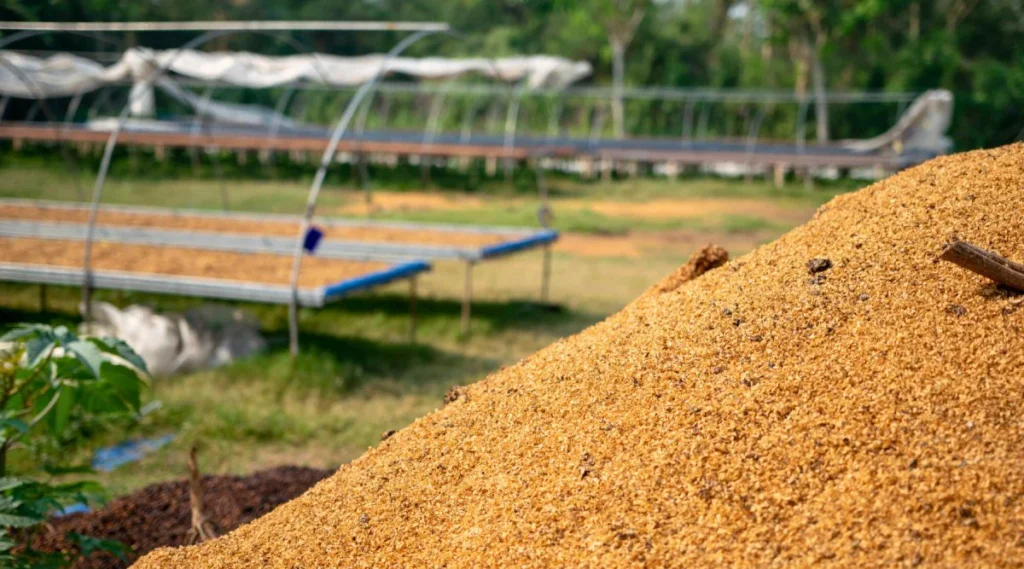


3 Responses